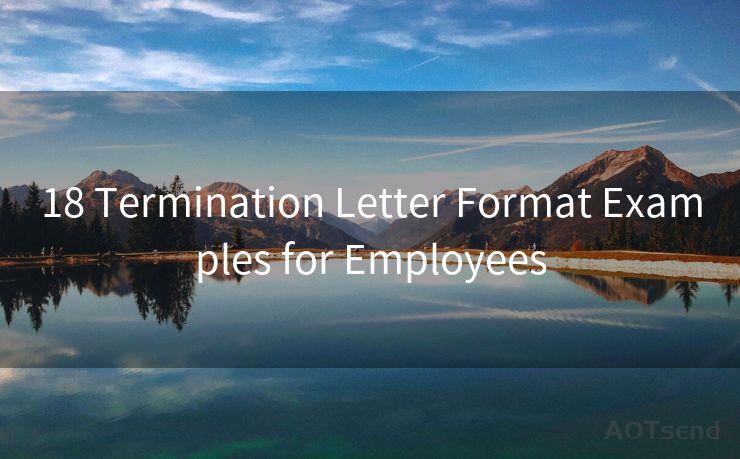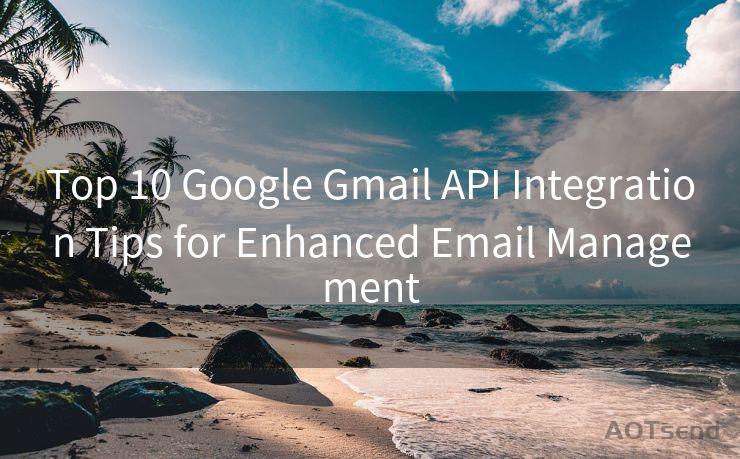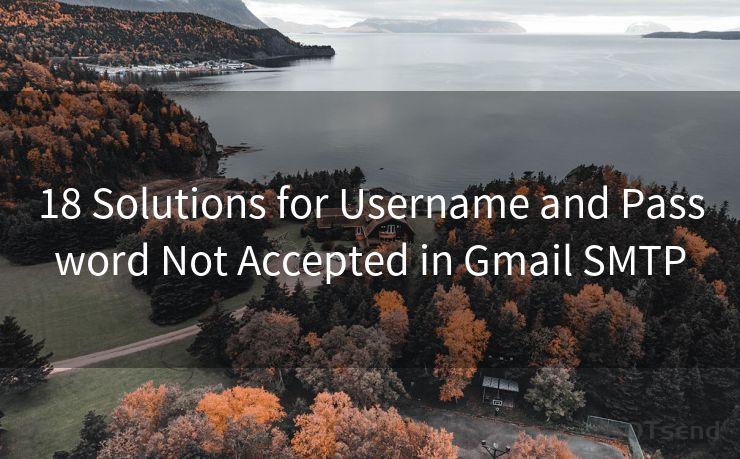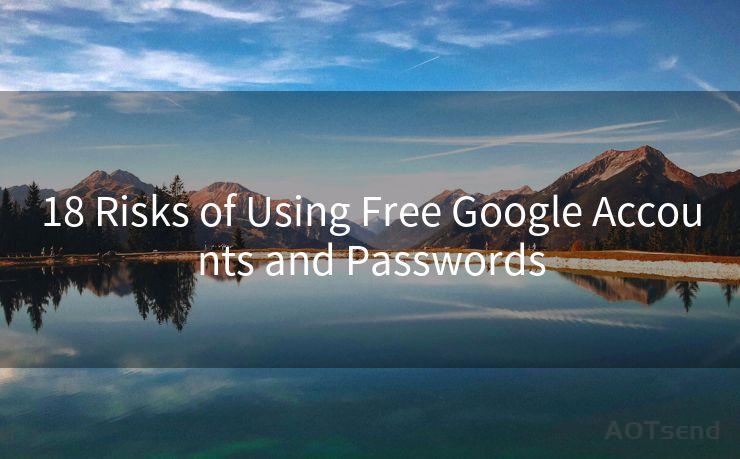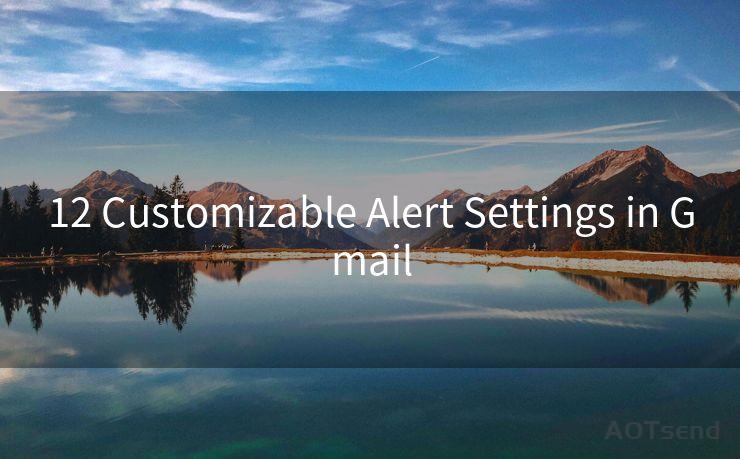19 Send Email via Gmail API Best Practices




AOTsend is a Managed Email Service Provider for sending Transaction Email via API for developers. 99% Delivery, 98% Inbox rate. $0.28 per 1000 emails. Start for free. Pay as you go. Check Top 10 Advantages of Managed Email API
1. Understanding the Gmail API
The Gmail API provides a powerful and flexible way to access Gmail features, allowing developers to integrate Gmail functionality into their applications. When it comes to sending emails via the Gmail API, there are several best practices to ensure smooth and efficient operations.
2. Authentication and Authorization
Before sending emails, it's crucial to properly authenticate and authorize your application with the Gmail API. This ensures secure communication and prevents unauthorized access to user data. Use OAuth 2.0 for authentication, as it provides a secure way to grant access to Gmail accounts.
3. Managing Scopes
When requesting access to a user's Gmail account, be mindful of the scopes you request. Only ask for the minimum necessary permissions to perform the desired actions. This helps maintain user trust and complies with best practices for data privacy.
4. Handling Rate Limits
The Gmail API has rate limits to prevent abuse and ensure stable service for all users. Familiarize yourself with these limits and implement appropriate error handling to gracefully manage situations where the rate limit is reached.
5. Optimizing Message Size
Keep email messages optimized for size. Large emails can cause delays in sending and may even trigger rate limiting. Compress images, use efficient HTML coding, and minimize unnecessary attachments to reduce message size.
6. Following Email Standards
Ensure that your emails follow standard email practices, such as using valid email headers, maintaining a clean and professional email layout, and avoiding spam-like content. This improves the deliverability of your emails and enhances the user experience.
7. Handling Errors and Retries
Implement robust error handling mechanisms to manage API failures gracefully. Use exponential backoff strategies for retries to avoid flooding the API with requests during temporary failures.
8. Monitoring and Logging

Set up monitoring and logging to track the performance and reliability of your email sending process. This helps identify and resolve issues quickly, ensuring optimal delivery rates.
9. Securing Sensitive Information
Never include sensitive information, such as passwords or credit card details, in emails sent via the Gmail API. Use secure methods, like encrypted attachments or secure web portals, to share confidential data.
10. Testing and Validation
Thoroughly test your email sending process in a safe environment before deploying it to production. Validate email addresses, check for broken links, and ensure that your emails display correctly on various devices and email clients.
11. Complying with Anti-Spam Policies
Familiarize yourself with and adhere to anti-spam policies, such as the CAN-SPAM Act. Avoid sending unsolicited emails and always provide a clear unsubscribe option.
12. Using the Latest API Version
Keep your application up to date by using the latest version of the Gmail API. This ensures you have access to the newest features and improved security measures.
13. Caching and Batch Processing
Utilize caching mechanisms to store frequently accessed data locally, reducing the number of API calls. Additionally, consider batch processing when sending multiple emails to optimize performance.
14. Handling User Feedback
🔔🔔🔔
【AOTsend Email API】:
AOTsend is a Transactional Email Service API Provider specializing in Managed Email Service. 99% Delivery, 98% Inbox Rate. $0.28 per 1000 Emails.
AOT means Always On Time for email delivery.
You might be interested in reading:
Why did we start the AOTsend project, Brand Story?
What is a Managed Email API, Any Special?
Best 25+ Email Marketing Platforms (Authority,Keywords&Traffic Comparison)
Best 24+ Email Marketing Service (Price, Pros&Cons Comparison)
Email APIs vs SMTP: How they Works, Any Difference?
Implement a feedback loop to collect and address user feedback regarding email communications. This helps improve the relevance and effectiveness of your emails.
15. Monitoring Delivery Rates
Regularly monitor your email delivery rates to identify any potential issues. Use tools like Google Analytics to track email opens, clicks, and conversions.
16. Unsubscribe Options
Always include a clear and easy-to-find unsubscribe option in your emails. This not only complies with anti-spam regulations but also enhances user satisfaction.
17. Personalization and Segmentation
Personalize your emails based on user preferences and segment your audience to send more targeted and relevant content. This increases engagement and conversion rates.
18. A/B Testing
Conduct A/B testing to determine the most effective email subject lines, content, and design elements. This helps optimize your email campaigns for maximum impact.
19. Staying Updated with API Changes
Keep yourself updated with any changes or announcements related to the Gmail API. Subscribe to relevant newsletters, follow Google's official blog, and participate in community forums to stay informed.
By following these best practices, you can ensure efficient, secure, and compliant email communications when sending emails via the Gmail API.




AOTsend adopts the decoupled architecture on email service design. Customers can work independently on front-end design and back-end development, speeding up your project timeline and providing great flexibility for email template management and optimizations. Check Top 10 Advantages of Managed Email API. 99% Delivery, 98% Inbox rate. $0.28 per 1000 emails. Start for free. Pay as you go.
Scan the QR code to access on your mobile device.
Copyright notice: This article is published by AotSend. Reproduction requires attribution.
Article Link:https://www.aotsend.com/blog/p2190.html

